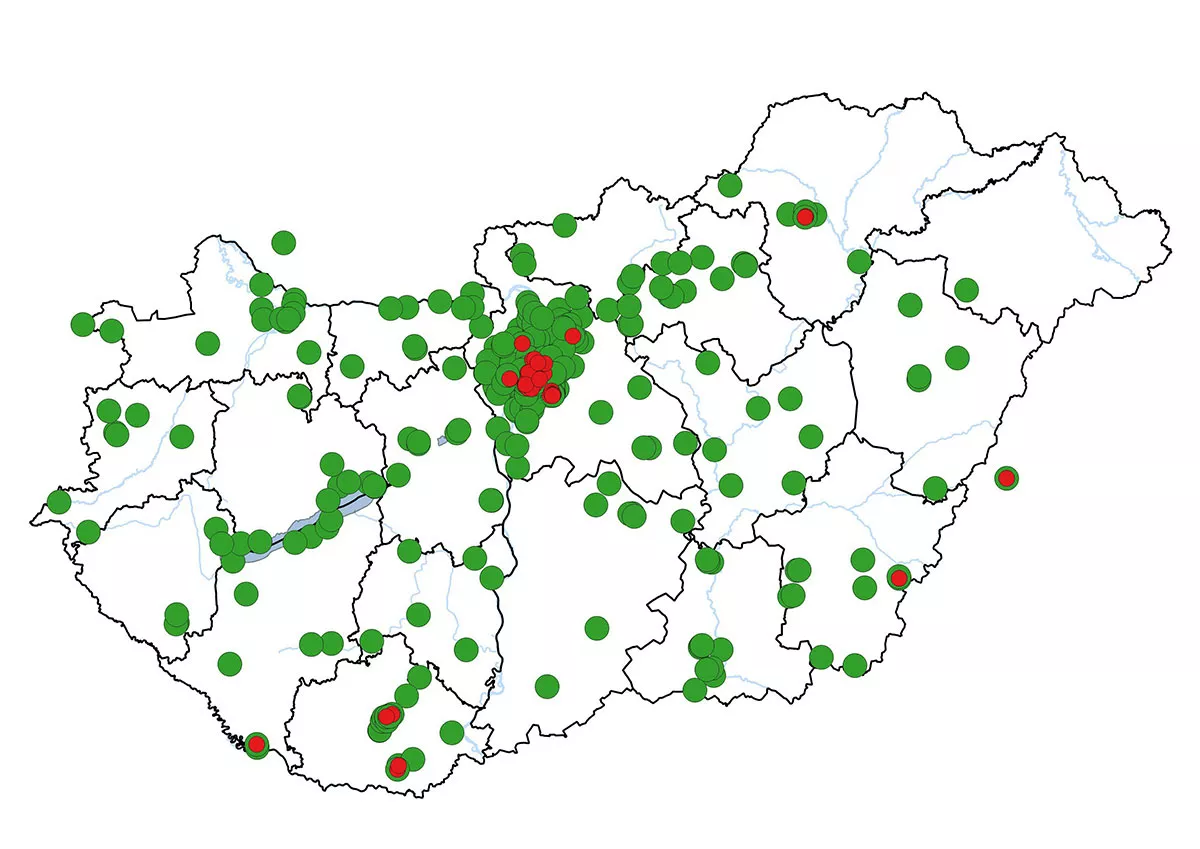The rainy, warm weather that comes after the drought is very conducive to the spread of biting mosquitoes. In such conditions, biting mosquitoes begin to multiply in large numbers. This applies not only to indigenous species but also to newly emerged alien species.
The Institute of Ecology and Botany at the Center for Ecological Research has once again called on the public to assist in socially important scientific work aimed at exploring the distribution of an invasive and potentially disease-spreading mosquito species, the tiger mosquito (Aedes albopictus).
In the citizen science campaign, ecologists are asking the public to inform the research institute immediately if they observe or capture an Asian tiger mosquito, indicating the place and time of the catch, and to send in the sample.
It is important to study this species because as is opportunistic, meaning it actively bites humans, domestic and wild animals, amphibians, reptiles and birds. It has been found to spread at least 22 types of arbovirus (viruses spread by insects). The precondition for the establishment of the dangerous pathogens it spreads in Hungary is for the tiger mosquito, as a vector, to have a large and stable population in Hungary. Based on the data currently available as a result of the research group's studies, the researchers are assuming that this condition is yet to be met in Hungary, but it is extremely important to constantly and professionally monitor the process.

“48 of the samples submitted last year proved to be Asian tiger mosquitoes, and the relatively distributed prevalence data indicates that specimens of Asian tiger mosquito may be appearing in several counties. Virological tests were performed on the submitted specimens, but all tests to date were negative for West Nile fever, Usutu and Chikungunya fever viruses,” said Dr Zoltán Soltész, researcher at the Institute of Ecology and Botany.
The tiger mosquito can be relatively easily distinguished from other biting mosquitoes in Hungary as this species has a very contrasting color: spots and stripes of snow-white scales cover its body on a black background, it has white rings on its legs and a single longitudinal white stripe on its back (in the middle of the thorax). The tiger mosquito is small in size, with a body length of around five millimeters.
More information in Hungarian at https://www.szunyog.okologia.mta.hu/felhivas

Background:
Milder winters help mosquitoes survive the colder months, and longer summers are allowing more generations to develop each year than before. Large amounts of precipitation, sometimes concentrated for a short period of time, increase the number of small bodies of water (inland water patches, ditches, puddles) that provide habitats for biting mosquito larvae. Therefore, the majority of the close to 50 species native to Hungary are troubling us humans in larger spatial distributions than ever before and in perceptibly larger numbers.
At the same time, long-distance, mass freight transport is paving the way for the settlement of invasive mosquito species in distant habitats within Hungary. This is why the Asian tiger mosquito (Aedes albopictus) has appeared in the Carpathian Basin. A sting from this insect causes more severe allergic symptoms in humans than those of other species. The Korean biting mosquito (Aedes koreicus) and the Asian bush mosquito (Aedes japonicus) have also appeared as new species in Hungary. While specimens of the tiger mosquito have been collected in Hungary only rarely, the latter two species already have self-sustaining populations in Hungary.
Mosquitoes are an important vector in the spread of many animal and human pathogens, so changes in their populations can pose an epidemiological threat. Indigenous species in Hungary are also suitable for the transmission of pathogens that are spreading worldwide, such as the Anopheles species, which spreads malaria, and the Culex species, which can spread the pathogens associated with West Nile fever.